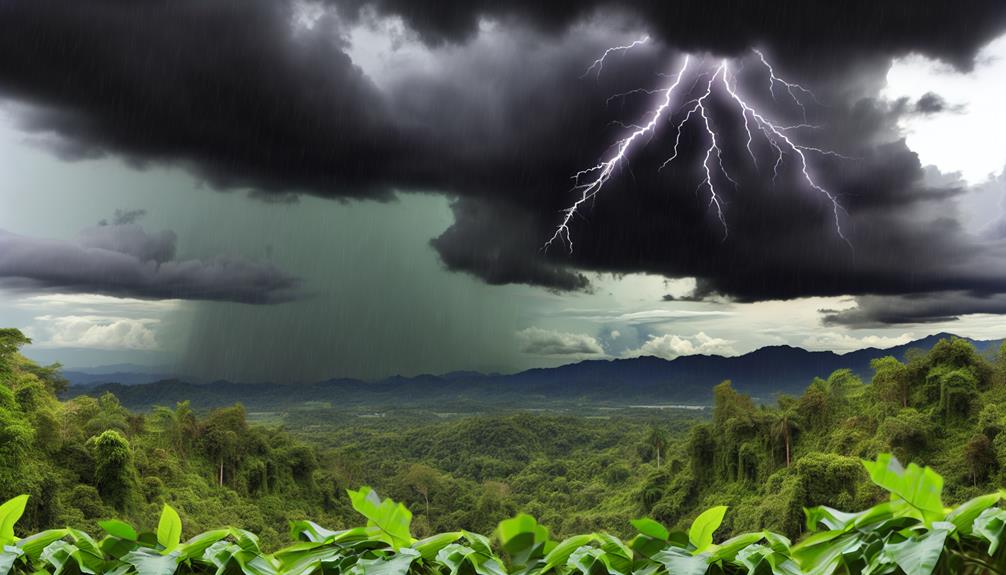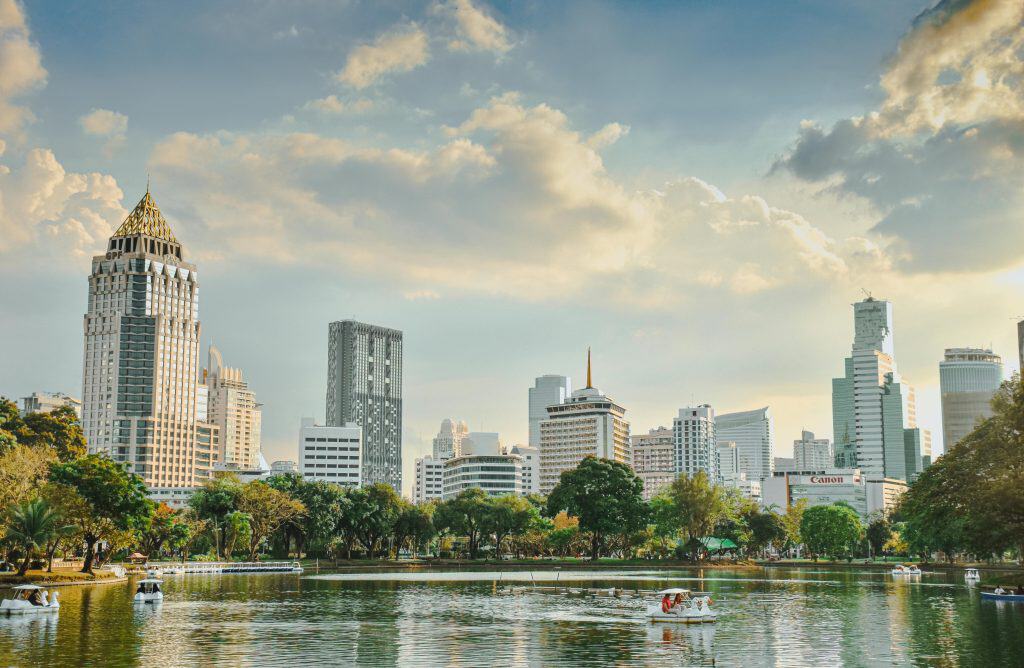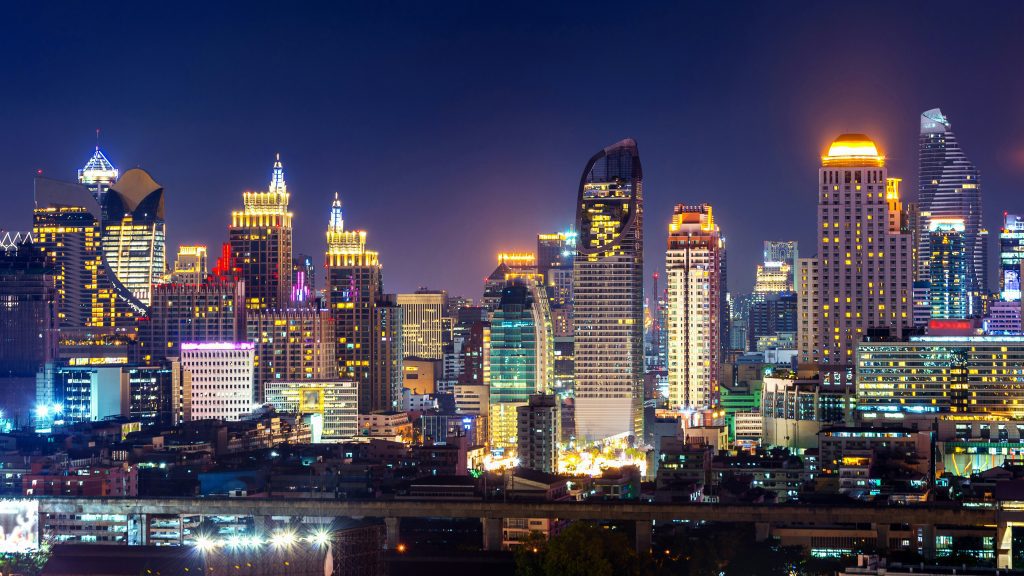As we approach the heart of the monsoon season, Thailand’s August weather forecast suggests a dynamic interplay of elements, with implications for both residents and international visitors.
The expected patterns, ranging from spontaneous showers to sustained downpours, create a canvas of unpredictability that is both challenging and enchanting. The month’s meteorological temperament offers a dual narrative: one of potential travel disruptions and the other of verdant landscapes brought to life by the nourishing rains.
Those contemplating a sojourn to the Land of Smiles during this period must consider the regional variations in climate, from the relative dryness of the Gulf coasts to the wetter embrace of the northern highlands.
The question remains: how can one optimally navigate this wet and wild chapter in Thailand’s seasonal rhythm?
The forthcoming insights aim to equip you with the knowledge to craft an experience that harmonizes with, rather than succumbs to, the whims of the August weather.
Best August Destinations
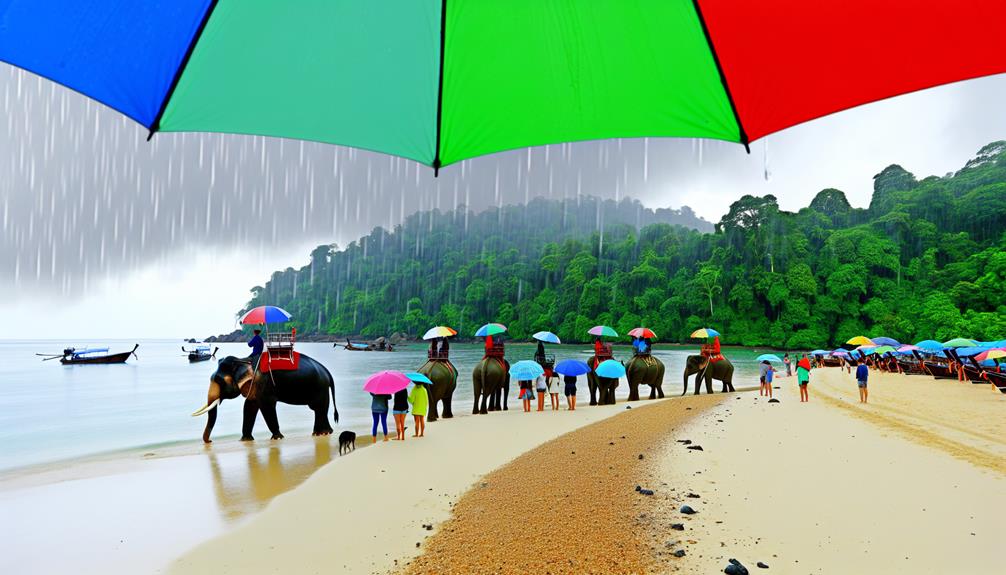
Amidst the varying weather patterns of Thailand in August, the upper Gulf coast and lower Gulf islands emerge as prime destinations due to their relatively drier conditions. Cities like Hua Hin, Phetburi, and the serene Sam Roi Yot National Park offer a reprieve from the prevalent monsoon rains, making them ideal for travelers.
The lower Gulf’s Chumphon, Surat Thani, and Nakhon Si Thammarat provinces also present less precipitation, providing favorable conditions for outdoor activities. Although one should remain prepared for occasional showers, these regions maintain a balance of accessibility and enjoyment during a month when other areas are heavily affected by the monsoon.
Notably, historical sites such as Ayutthaya and Sukhothai are still accessible, albeit with the prudent use of rain gear.
Island Weather Patterns
In August, the weather patterns on Thai islands vary significantly. The lower Gulf islands experience pleasant conditions, thanks to the westerly winds. Travelers seeking sun will find the lower Gulf islands such as Ko Samui, Ko Pha Ngan, and Ko Tao appealing. Conversely, the Andaman coast and eastern Gulf coast face heavy rainfall. Regions like Phuket and Ko Chang encounter substantial precipitation, with the latter prone to frequent and intense downpours. This weather disparity is largely due to the monsoonal wind shift that affects each coast differently. Consequently, while some islands offer a beach-ready escapade, others present a quieter, rain-drenched experience. This can potentially impact accessibility and outdoor activities.
Central Thailand Climate
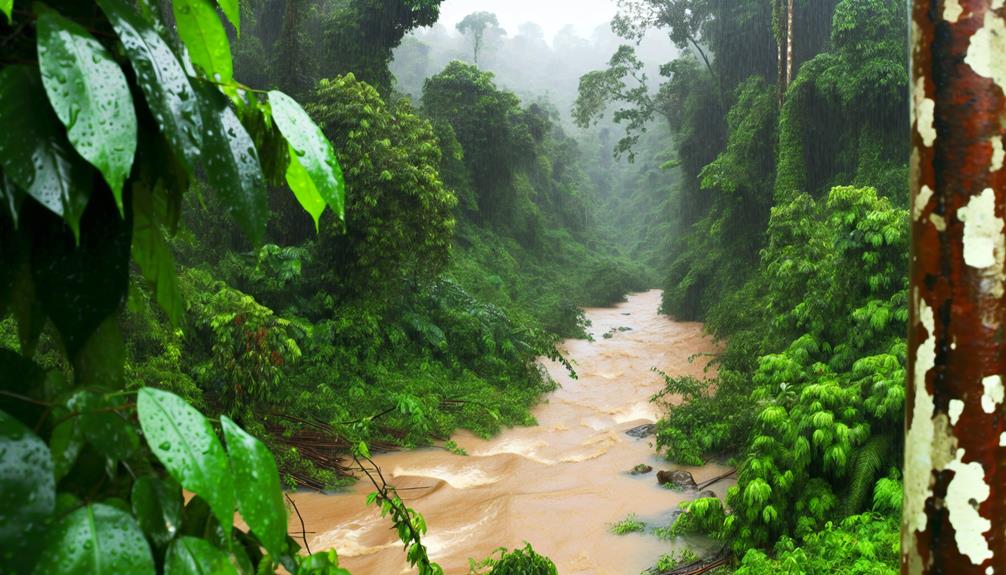
Central Thailand, including Bangkok, typically experiences a moderate increase in rainfall during the month of August, though temperatures remain consistently warm. The region sees a slight uptick in precipitation compared to July, but it generally does not disrupt daily life significantly. Visitors to Bangkok should be prepared for sporadic torrential downpours, which can lead to temporary street flooding. The inundation, while swift, usually recedes quickly, and urban infrastructure is designed to handle such events, though travelers may encounter inconveniences in the city’s sois (side streets).
Historically, the ancient ruins in Ayutthaya and other historical sites of Central Thailand remain accessible, with the wet conditions necessitating appropriate attire, such as waterproof shoes and umbrellas. Despite the rain, the warmth of the region endures, offering a humid but vibrant travel experience.
Northern Monsoon Effects
While Central Thailand contends with its own set of monsoon-induced challenges, the northern region faces a distinct weather pattern marked by heavy rainfall and potential flooding due to the northern monsoon effects. The monsoon brings a significant increase in precipitation, with August ranking as the wettest month for this part of the country.
Cities like Chiang Mai may experience street flooding, disrupting daily activities and transportation. The wet conditions extend beyond urban areas, with rural provinces such as Phrae, Nan, and Chiang Rai at risk of both flooding and landslides. This is particularly true in regions where deforestation has occurred.
Travelers and residents alike must prepare for over 20 days of rainfall, especially near the Burmese border, and exercise caution in areas known for water-induced hazards.
Frequently Asked Questions
How Does Thailand’s August Weather Impact Local Wildlife and Outdoor Activities Like Bird Watching or Wildlife Safaris?
Thailand’s August weather, characterized by rain, impacts wildlife activities with potential disruptions. Bird watching and safaris may face challenges due to reduced visibility, accessibility issues, and altered animal behavior during the wet season.
Are There Any Cultural Festivals or Events That Take Place in Thailand During the Rainy Season That Travelers Can Attend?
Yes, travelers can attend cultural festivals in Thailand during the rainy season, such as the Queen’s Birthday, which is celebrated nationwide with various events and is also considered Mother’s Day in Thailand.
What Are the Best Strategies for Dealing With Insects, Particularly Mosquitoes, During the Wet Season in Thailand?
To mitigate mosquito exposure during Thailand’s wet season, utilize repellents containing DEET, wear long-sleeved clothing, and opt for accommodations with mosquito nets or screens to ensure a more comfortable experience.
Can You Recommend Indoor Activities or Attractions That Are Ideal for Days With Heavy Rainfall in Various Parts of Thailand?
For rainy days in Thailand, consider visiting museums, aquariums, shopping centers, and culinary workshops. Indoor cultural shows and wellness retreats offer enriching experiences away from the inclement weather.
How Do Transportation Services (Such as Ferries, Buses, and Flights) Typically Adjust or Cope With the August Weather Conditions in Thailand?
In Thailand, transportation services during August frequently adapt to weather conditions with altered schedules, ensuring safety during heavy rains and potential flooding, which may affect ferry services, flight operations, and bus routes.
Conclusion
In conclusion, Thailand’s August climate presents a complex tapestry of weather conditions, affecting various regions differently.
While the Gulf coasts offer drier interludes, the northern terrain is lush yet challenging, and central areas provide cultural exploration despite the rains.
Island weather varies between tranquil beach settings and subdued tourist activity.
Travelers must be informed and prepared to embrace the monsoon’s dual impact on Thailand’s landscapes and the opportunities for adventure and discovery it brings.

